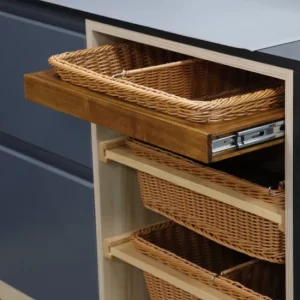How to Finish Off Board and Batten Walls

You can add board and batten walls to a room for a more elegant look. These walls look great in living rooms, dining rooms, and bedrooms, and can even be an attractive accent in a bedroom. If you are planning to add these walls to your home, you should know how to finish them off properly.
Adding board and batten walls to a room
To add board and batten walls to a room, the first step is to measure the wall width. Once you have your width, cut the boards to fit the wall and make sure that the boards are flush with the studs. After the boards are in place, add the battens on the ends of the walls. Cut them to the proper length and adhere them to the wall using construction adhesive. You can also nail them in place.
Board and batten walls are a beautiful way to add custom touches to a builder-grade home. Not only are they affordable and easy to install, but they are available in a variety of designs and patterns. They’re also versatile and can be used on an entire wall or as an accent.
One of the advantages of board and batten accent walls is that they add a classic look to any room. The timeless beauty of this style means that it’s a great choice for a modern home, and you can do it yourself, saving on installation costs and outsourced labor. And because board and batten is so versatile, you can update it with any new trends in interior design, without compromising its classic charm.
To install board and batten walls, use a brad nailer to attach batten pieces to the wall studs. Make sure to use a level and take vertical measurements to ensure accuracy. The boards must be installed at the desired height. Similarly, battens should be installed at the desired height from the baseboard.
Choosing the right material for board and batten walls
Before you start installing board and batten walls, you need to choose the right material. Choose a material that’s flexible enough to be nailed to studs evenly. If you’re using board and battens to create the look of a rustic farmhouse, choose a material that doesn’t require much sanding. Choose a material that’s easy to work with, like MDF. It doesn’t require caulking, and its smooth edges don’t need to be smoothed.
Wood is one of the most popular materials used in board and batten walls. It’s reasonably durable and can be painted to match any room’s color scheme. Additionally, it’s often much cheaper than other materials. Red cedar and cypress are two common types of wood used for interior board and batten walls. Both of these types of wood are easy to paint.
Wood is the most common material for board and batten installation, but you can also choose MDF if you want a smooth, less expensive option. However, if you plan to use wood, make sure to buy a quality piece without knots, as they will make the project more time consuming and expensive. Also, don’t forget that it is important to have a power saw, as this will make the job go faster. You can also purchase an inexpensive miter box to make all the cuts.
Board and batten walls are very beautiful. However, they’re not the right choice for every room, especially if you want to use them for storage. Depending on the use of the room, you’ll need to choose the right material and paint. For example, hallways tend to see more traffic than most other rooms, and you don’t want scuff marks on your walls.
Finishing off board and batten walls
If you’ve decided to go with board and batten walls for your home, you’ll need to take some extra care when finishing the walls. First, you must measure the width of the wall. This will help you decide how much space you need between each board. Next, you must cut each batten to fit. Once you’ve made sure the spacing is correct, you can place the battens on the wall.
Whether you’re installing a board and batten wall for the whole room or just the top portion, it’s important to have a plan. You can incorporate existing baseboards and trim into the design, or you can create a grid of boards. This can be done in stripes, or just about any design you want.
After you’ve completed the board and batten wall, you’ll want to paint it. You should choose a paint color that suits the style of the room. Before applying paint, apply primer to the surface of the boards and batten. Then, use a roller or paint sprayer to apply the paint. It’s important not to cover the whole wall with the paint, but to connect the battens and paneling board.
Next, you should add batten pieces around the board and batten walls. To attach the batten pieces, you can use a brad nailer to attach the batten pieces to the wall on studs. You should be sure to use a level and take measurements when doing this. Then, you can attach the batten pieces using finishing nails or liquid nails.







